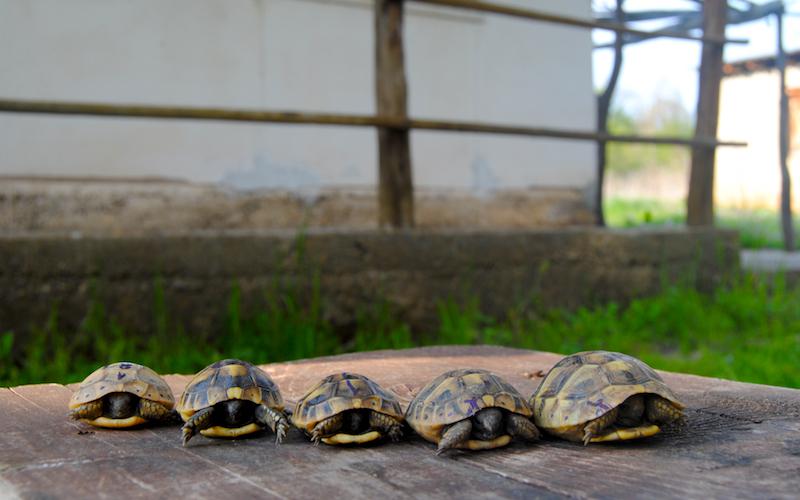Dragan Arsovski
Identifying conservation threats and building new conservation capacities via the implementation of advanced ecological studies on the Hermann’s tortoise.

Juvenile tortoise.
Due to long-lasting anthropogenic pressures, the Hermann’s tortoise is now present in Western Europe in fragmented and often small populations. Fortunately, in its Eastern distribution range it is widespread and common. Nonetheless, due to its desirability as a pet animal and the fast-recent development of Balkan countries, many populations are under increasing pressure, and will most likely face a similar fate as their western conspecifics. We are thus convinced that ecological studies on Balkan tortoises are crucial, and perhaps even more importantly is the association and promotion of conservation education. Our almost decade long scientifically productive work (Golubović et al. 2013; Golubović et al. 2014; Bonnet et al. 2016 etc.) on this endangered species on two populations facing different conservation concerns offers a strong scientific baseline. We wish to maintain this strong research component, but more importantly, we strive at giving it a very strong conservation and educational context giving the study a threefold purpose:
i. Research: Collecting data in a capture-mark-recapture framework in order to evaluate both age and sex specific survival probabilities in both populations that will fill in very important gaps in the research on this species, particularly aspects of the functioning of the elusive immature stage.
ii. Conservation: Seeing as the studied populations, and the cohorts within these populations (different sexes and ages within the immature class) are under different environmental pressures, any differences in survival probabilities will be indicative of conservation threats. Some of these, such as an increased human presence in Konjsko village are more obvious than others i.e. biased sex ratio on the island.
iii. Education: Students that will be identified as most motivated potentials during previous educational activities will join us in the field. They will be aware of the different potential threats that the studied tortoise populations and cohorts are under and will capture mark and recapture with this in mind. Obtaining results afterwards will round up the experience, and students will be allowed to make their own conclusions along with the observations they will have had made. The practical knowledge gained from such an experience would be priceless for any aspiring conservationist.
In doing so, we wish to create a sustainable conservation framework by demonstrating that conservation cannot properly be implemented without fundamental research, which in turn can be used to train new research capacities that will witness first-hand how conservation can be tailored according to threats.